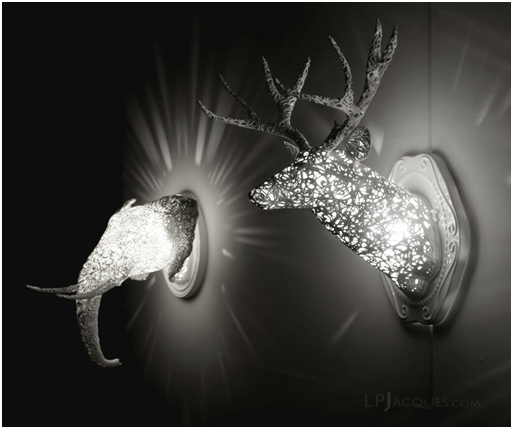
Charles R. Goulding and Peter Favata take a dip into 3D printing for new outdoor hangouts.
Recently the Wall Street Journal published an article about the renovation of a pool house at an estate in Bedford, NY. This has been part of a new trend called the “Posh Pool House”, similar to the “She Shed”. The posh pool house has gained popularity in a time where more people have been spending time at home with their families, causing people to find projects to keep them busy at home.
3D Printing Décor
One of the most important aspects of these pool houses is customizing them with décor unique to the person designing them. 3D printing allows you to create many different household items while cutting costs and allowing for complete design freedom.
One example of this is 3D printing lighting fixtures. This allows for very intricate designs that would cost more and take longer to produce through traditional manufacturing methods.

Wall decorations are another item that can be 3D printed. Many people will use create beautiful pieces of are using CAD and use 3D printers to bring them to life. This allows for endless possibilities to design whatever an artist desires.

The Research and Development Tax Credit
Companies working in innovative products related to any of the categories above should take advantage of Research and Development (R&D) tax credits. Enacted in 1981, the now permanent Federal R&D Tax Credit allows a credit that typically ranges from 4%-7% of eligible spending for new and improved products and processes. Qualified research must meet the following four criteria:
- Must be technological in nature
- Must be a component of the taxpayer’s business
- Must represent R&D in the experimental sense and generally includes all such costs related to the development or improvement of a product or process
- Must eliminate uncertainty through a process of experimentation that considers one or more alternatives
Eligible costs include US employee wages, cost of supplies consumed in the R&D process, cost of pre-production testing, US contract research expenses, and certain costs associated with developing a patent.
On December 18, 2015, President Obama signed the PATH Act, making the R&D Tax Credit permanent. Beginning in 2016, the R&D credit can be used to offset Alternative Minimum tax for companies with revenue below $50MM and, startup businesses can obtain up to $250,000 per year in payroll tax cash rebates.
Conclusion
With more people spending time at home and looking for activities to take up time designing a “posh pool house” could be the perfect project to start. Utilizing 3D printing could make the experience even more creative and fulfilling to really make it your own.
